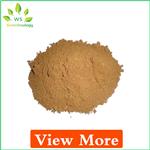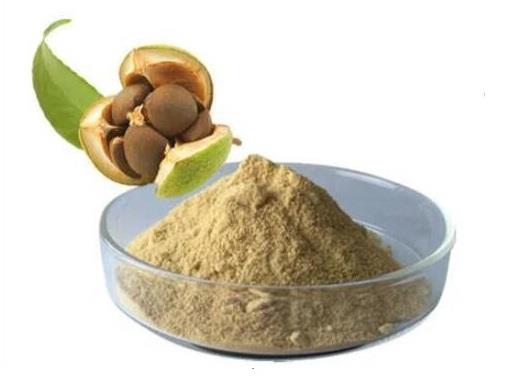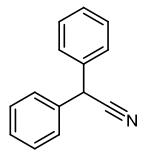Properties and Biological functions of Saponin
Saponins are secondary metabolites with high molecular weight. They present in a wide range of plant species and are distributed throughout the bark, leaves, stems, roots and even flowers. Saponin is bitter in taste and in recent years, they have received considerable attention because of their various biological activities including hepatoprotective, anti-ulcer, anti-tumor, antimicrobial, adjuvant and anti-inflammatory activities.

Properties
Saponins are composed of a lipid soluble aglycone consisting of either a sterol or more commonly a triterpenoid and water soluble sugar residues, due to their amphiphilic nature, they are highly surface active and their biological activities are related to their chemical structures. Both steroidal and triterpenoids saponins show detergent properties.
Saponins generally act by permeabilising plasma membranes. Their amphipathic properties enable them to penetrate membranes, where they complex with sterols and cause pore formation (Roddick 1979; Roddick and Drysdale 1984; Steel and Drysdale 1988; Fenwick et al. 1992; Armah et al. 1999). While membrane permeabilisation is a common feature of saponins, these compounds are also likely to have further effects on cells, for example, by interfering with cellular processes, such as enzyme activities, transport, organelle integrity, redox-related functions and other signal transduction processes and through triggering apoptosis (e.g. McManus et al. 1993; Ohana et al. 1998; Sparg et al. 2004; Haridas et al. 2001a; Lemeshko et al. 2006). For some saponins, it has been shown that biological activity does not depend on amphipathicity, making it unlikely that their mode of action is through membrane permeabilisation (Oda et al. 2003; Simons et al. 2006).
Biological functions
Saponin has hypolipidemic properties as they reduce cholesterol and low density lipoprotein levels and may be helpful in the treatment of dyslipidemia.
Saponin exhibits cytotoxic effect on cancer cells through induction of apoptosis. They also have chemotherapeutic properties as they have mechanisms that control protein expression linked to cell cycle, cancer progression and metastasis.
The antidiabetic effects of saponins have been extensively reported, with saponins being identified as an antidiabetic principle from medicinal plants.Several mechanisms have been proposed for the antidiabetic properties of saponins which include, activation of Peroxisome proliferator-activated receptors gamma (PPARγ),activation of Glucose transporter type 4 (Glut4),Activation of adiponectin expression,Activation of PI3K/Akt Pathway,increase in expression of adipsin and activation of AMP-activated protein kinase (AMPK).
);You may like
Related articles And Qustion
Lastest Price from Saponin manufacturers

US $0.00-0.00/kg2024-09-19
- CAS:
- 8047-15-2
- Min. Order:
- 1kg
- Purity:
- 99%
- Supply Ability:
- 20MT

US $5.00-2.00/KG2024-09-19
- CAS:
- 8047-15-2
- Min. Order:
- 1KG
- Purity:
- 99%
- Supply Ability:
- 10000kg





